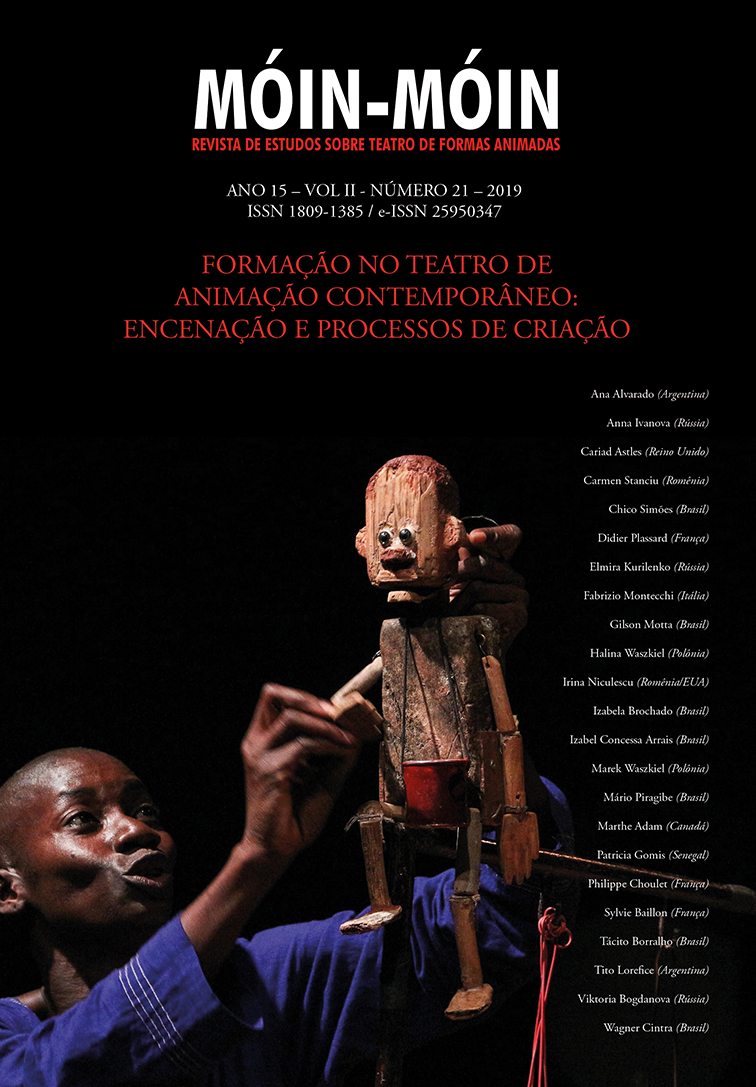O diretor no teatro de bonecos (contexto da Europa Oriental)
DOI:
https://doi.org/10.5965/2595034702212019047Abstract
Na Polônia, assim como nos países da Europa Oriental, para o teatro de bonecos
da segunda metade do século 20, e igualmente no primeiro quarto do século 21, a pessoa mais importante é o diretor. No entanto será que o papel do diretor no teatro de bonecos sempre foi o mesmo? O objetivo deste estudo é determinar este problema. Foi somente no início do século 20, no período da Grande Reforma do teatro, que o diretor passou a ter competências ilimitadas. No teatro de bonecos, esse processo durou muito mais, porque o estilo clássico de organização do teatro, derivado de criadores específicos de empresas privadas, também perdurou mais tempo. Hoje, o diretor é quem controla completamente um teatro de bonecos. Na prática, os diretores poloneses ainda estão convictos de que o teatro se destina a contar histórias. Este processo limitou o teatro de bonecos a ser uma arte existente independentemente, baseada principalmente nas habilidades de artesãos; no milagre de animar um objeto sem vida, um boneco, cuja vida mágica tem tanto a oferecer aos espectadores. Pelo contrário, o eixo desse processo sustenta os artistas que vêem o significado de suas expressões teatrais ao darem vida à matéria sem vida. Isto – quando o teatro de bonecos é, afinal, um espetáculo – é arte visual em movimento, não contação de histórias.
Downloads
Downloads
Pubblicato
Come citare
Fascicolo
Sezione
Licenza
Copyright (c) 2019 Móin-Móin - Revista de Estudos sobre Teatro de Formas Animadas

TQuesto lavoro è fornito con la licenza Creative Commons Attribuzione 4.0 Internazionale.
Ao submeter um artigo à Móin-Móin Revista de Estudos Sobre Teatro de Formas Animadas e tê-lo aprovado os autores concordam em ceder, sem remuneração, os seguintes direitos à Revista: os direitos de primeira publicação e a permissão para que a Revista redistribua esse artigo e seus metadados aos serviços de indexação e referência que seus editores julguem apropriados.
Os artigos cujos autores são identificados representam a expressão do ponto de vista de seus autores e não a posição oficial da revista Móin-Móin.
Plágio, em todas as suas formas, constitui um comportamento antiético de publicação e é inaceitável. A Revista Móin-Móin reserva-se o direito de usar software ou outros métodos de detecção de plágio para analisar os trabalhos submetidos.
![]()
Este obra está licenciado com uma Licença Atribuição-NãoComercial 4.0 Internacional






